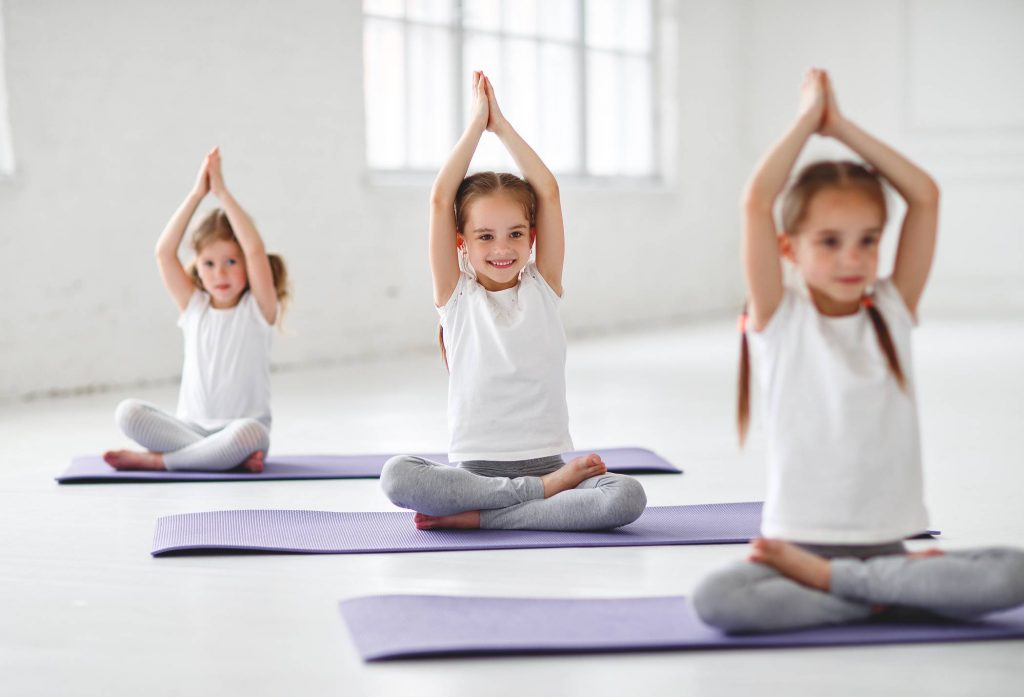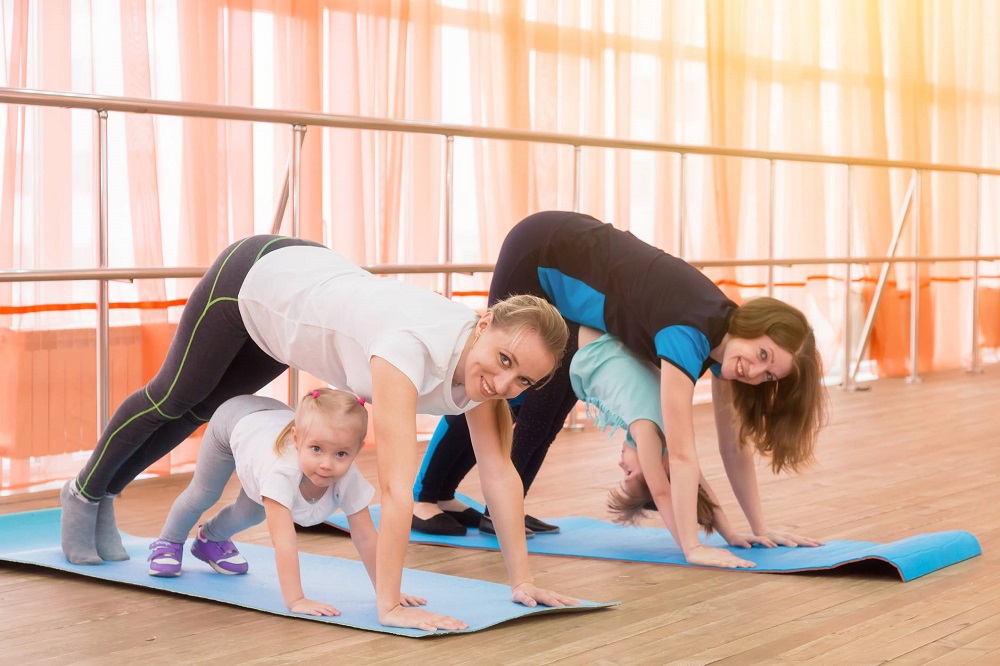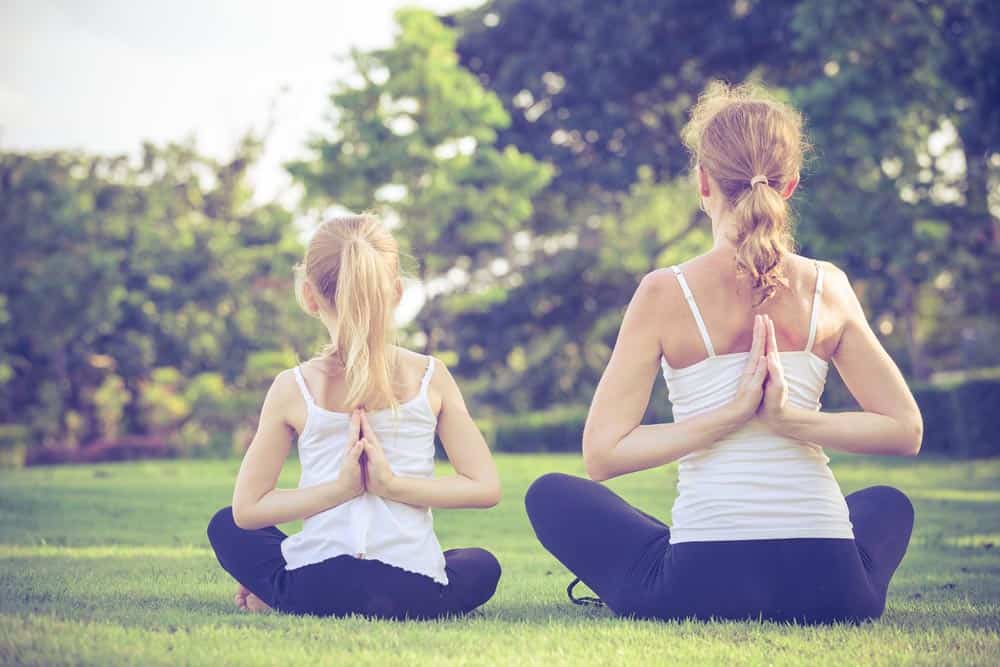Yoga classes for kids
Practicing yoga is a much deeper activity than it seems. Between breathing exercises, flexibility and awareness of one's body, it is a real step, beneficial for all ages. A global approach, which also adapts to the problems of our contemporary lives.
The benefits of yoga can also be applied to the youngest ones! More and more classes are being created and adapted to a child's posture, whether it's family yoga or not.
Because yes, to get the most out of the benefits of yoga when you are still very young, it is important for the teacher to understand the issues of his audience. But is a yoga class the same as an adult class? What is a children's yoga lesson made up of? The answer right away!
The beginning of a children's yoga session
Once you reach a certain age, prenatal yoga or family yoga is no longer the best way to enjoy the benefits of yoga. And yes, from the age of 3, children can also become yogis on their own! This is the reason why yoga designed for children exists!
Of course, before a yoga session, regardless of age, it is important to have appropriate clothing and equipment. Because a child, it runs, it gets agitated, and it is advisable to reproduce the postures as easily as possible for them.
Concretely, when the class begins, most of the time, the teachers introduce the discipline through small games, through a discussion, in order to prepare the yogic ground as well as possible. It is also important for the teacher to take the pulse of the students and their emotions, so that he or she knows which points would be most useful to work on.
Then it's time to warm up, because yes, yoga is a sport. You must therefore work on your flexibility, in full awareness of your body, always in a playful way!
So that the children can link body and mind in the best possible way, the teacher will initiate some simple, and often gentle movements. A beautiful way to reach a crescendo in the heart of the class: the postures.

Yoga postures for children
Starting from the principle that a child is capable of many things, but never without denigrating their physical and mental limits, a yoga class will be structured around a few postures, sometimes simple, sometimes more complex.
A regular practice will naturally make everyone aware that the age of the child will have a real influence on the number and difficulty of each practice. Nevertheless, all this will have the effect of reinforcing self-confidence, concentration, flexibility, and relaxation.
And among the most common yoga postures practiced in a children's yoga class are :
• The dog's posture, hips up, head down. This posture has the advantage of being relatively simple to perform, and above all, very playful,
• The posture of the butterfly, sitting with the soles of the feet together, to focus on flexibility,
• The posture of the mountain, to emphasize the inner calm,
• The posture of the tree, standing with one foot up, hands in the air, to work on concentration and balance,
• The posture of the boat, or even of the boat with two people, which consists in making your feet and hands touch with your partner (why not a parent!),
• The posture of the turtle, seated, legs stretched out, hands joining the feet, in order to work on flexibility,
All this makes up a yoga class, in what is most beautiful and most interesting for the child. Because yes, each session is an opportunity to work on different points on his yoga mat. But the main interest is that the young public is satisfied, becomes aware of his body, his mind, and wants to come back the following week!
For this, it is necessary to leave him a good last memory of the course, and it is necessary that it ends well. Generally, a yoga class for children ends in the same way as a traditional yoga class for adults, except that it is more adapted to the freshness of a child.

Completing a children's yoga class
As you can see, a children's yoga class ends with a moment of calm and even relaxation. The idea is to bring a good dose of positive energy, and to multiply the effects of the practice tenfold.
How does it work? Through different techniques, each one more useful than the other. By seeing what the group's energy invites you to practice.
We could mention the calm time in the dark, eyes closed, motionless, where everyone recharges the batteries to continue the day with strength and pleasure.
This kind of moment, which can also be practiced in the light, allows the child to be invited to visualization exercises, therefore mindfulness, which are often quite playful.
Some classes are also an opportunity to learn to meditate little by little. Yes, meditation is often welcome at the end of a children's class, for the simple reason that it allows the values of yoga to be transmitted in a peaceful way: self-acceptance, mental strength or breathing.
And generally, a yoga class for children does not escape the stretching, which is essential when you have just spent the session doing postures. This moment will pave the way for the student to relax, but also to realize that his body is also a tool, which allowed him to do all these postures during the session.
Finally, it may happen that some teachers decide to have the whole room put away, so as to show the yoga exercise as a real concrete and collective process in addition to being an inner quest. In addition, this moment will also allow for discussion between students or teachers about how they felt about the session, etc.

The benefits of yoga for children
If we talk about children's yoga as a sport, it turns out that the reflection is not complete. Because yes, in addition to being a relatively physical practice, the body is not the only actor involved.
During a session, it is often directly linked to the mind, but also to the spirit, so that the three form a whole that carries with it many benefits. These benefits are different, depending on the audience, and adults and children will not always have the same consequences after a class.
In the case of children, yoga allows many things, and already after the first class :
• Improved self-confidence, thanks to the different postures,
• A tenfold relaxation, especially after the calm time at the end of the session,
• A better apprehension of his flexibility, his physical strength, in short, his body,
• Improved self-knowledge,
• A renewed complicity with others, with yoga friends, and even, if it is a family yoga, with one's parents,
• An awareness of the importance of breathing in everyday life,
• Alleviate everyday tensions, at school or elsewhere,
• Have fun, quite simply, thanks to some more or less playful postures!
Because yes, yoga practice is by no means just about saying a greeting to the sun and praying all day long, and the children's classes prove it! Thanks to an introductory moment, followed by adapted postures, just before a time of calm and gentleness, the child can enjoy the best possible benefits worthy of a yogi.
Because we will not stop saying it, but yoga is a complete discipline! And if its practice is more and more widespread, there are reasons for that. So why not share it with your children? Namaste!


